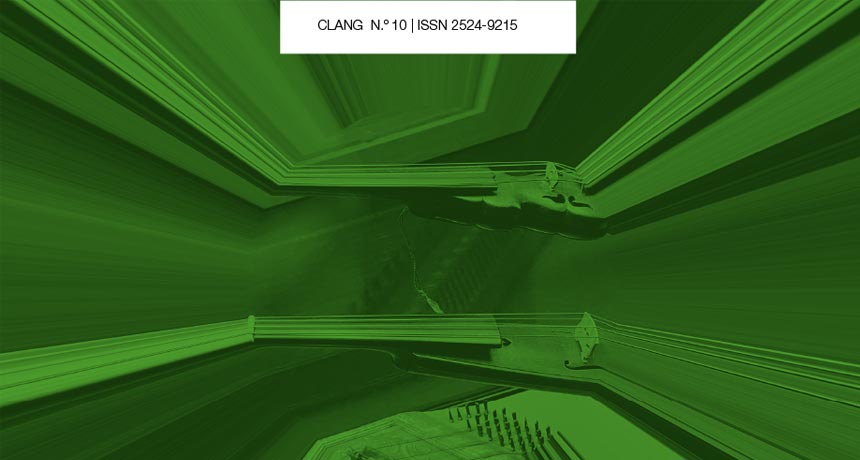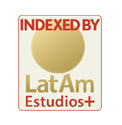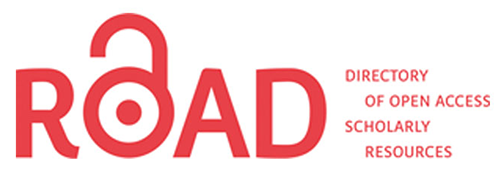Sound Intervention of The Piece Coeur by Bussotti
Sound Space Treatment
DOI:
https://doi.org/10.24215/25249215e045Keywords:
Sound space, structure, electroacustic musicAbstract
In this work, we propose an approach to the electroacoustic intervention carried out by the composer Ricardo de Armas in the work Coeur by Sylvano Bussotti with an interest in the treatment of sound space. To this end, we carry out a description of materials and sound gestures, behaviors and relations of the whole, structural analysis and dimensional qualities. For this, we have detailed the concepts at stake and some of the theoretical approaches as Basso, Cetta, Edelstein and Saitta. We propose that the use of mixed media enriches and expands the acoustic space through the incorporation and edition of new sources, the addition of tonal heights and the extension of the register and the textural treatment, among other procedures.Downloads
References
Aguilar, M del C. (2002). Aprender a escuchar música. Antonio Machado libros.
Araya, P. (2018). Objetos sonoros y configuraciones texturales dinámicas del sonido en la música instrumental contemporánea. Perspectiva Interdisciplinaria del Laboratorio de Creación Musical, 1(2), 97-136.
de Armas, R. (s.f.). Intervención, apropiación, cita y resignificación: ampliando el espectro creativo. http://www.ricardodearmas.mibvc.com.ar/
Basso, G. (2006). Percepción Auditiva. Universidad Nacional de Quilmes.
Cetta, P. (2009). Integración de la música al espacio virtual. En: G. Basso, O. Di Liscia y J. Pampin, (Comps.), Música y Espacio: ciencia tecnología y estética (pp. 271-286). Universidad Nacional de Quilmes.
Delalande, F. (1995). La Música es un Juego de Niños. Ricordi.
Di Liscia, O. (2010). Algunas reflexiones sobre la espacialidad del sonido en el marco de la producción discográfica comercial y la música electroacústica. LIS-Letra imagen sonido-Ciudad mediatizada, (5), 158-162.
Eguía, M. y Edelstein, O. (2007). The Acoustic Grid [La Grilla Acústica]. En A. Barboza (Ed.), Insert-zehn kooperationen zwischen kunst und wissenschaft (pp. 30-36). Gutleut Verlag.
Fessel, P. (2009). Descentramiento y concreción del espacio en la música del siglo XX. En G. Basso, O. Di Liscia y J. Pampin (Comps.), Música y Espacio: ciencia tecnología y estética (pp. 261- 269). Universidad Nacional de Quilmes.
Kendall, G. (2009). La interpretación de la espacialización electroacústica: atributos espaciales y esquemas auditivos. En G. Basso, O. Di Liscia y J. Pampin (Comps.), Música y Espacio: ciencia tecnología y estética (pp. 241-258). Universidad Nacional de Quilmes.
Minsburg, R. (2010). Percepción de la simultaneidad sonora en música electroacústica. En el Límite. Escritos sobre arte y tecnología, (1), 35-43.
Murray Schafer, R. (1998). Cuando las palabras cantan. Ricordi Americana.
Saitta, C. (2016). El timbre como factor estructurante. Espacio Sonoro, (40), 1-9.
Sigal, R. (2014). Estrategias compositivas en la música electroacústica. Universidad Nacional de Quilmes.
Downloads
Published
How to Cite
Issue
Section
License

This work is licensed under a Creative Commons Attribution-NonCommercial-ShareAlike 4.0 International License.
The acceptance of the manuscript by the magazine means the non-exclusive cession of the property rights of the authors in favour of the editor, who allows the reuse, after publication (post print), under a license Attribution-NonCommercial-NoDerivatives 4.0 International.
According to these terms, the material can be copied and redistributed by any means or in any format as long as a) the author and original source of the publication are quoted (magazine and URL of the work), access to the license is provided and whether changes have been made is mentioned; and b) the material is not used for commercial purposes.
The cession of non-exclusive rights means that after the publication (post print) in Clang the authors can publish their work in any language, means and format; in such cases it must be mentioned that the material was originally published in this magazine. Such cession also means the authorization of the authors for the work to be collected by SEDICI, the institutional archive of the Universidad Nacional de La Plata, and to be spread in the databases that the editorial team considers appropriate to increase the visibility of the publication and its authors.
Moreover, the magazine encourages the authors to deposit their productions in other institutional and thematic archives under the principle that offering the society the scientific and academic production without any restrictions contributes to a greater exchange of the global knowledge.












 </a >
</a >












